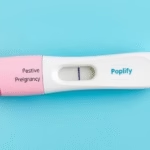Understanding Implantation Bleeding and Period Spotting
In this article, we will be talking about implantation bleeding and period spotting. These two terms are often confusing for many individuals, especially those who are trying to understand their body’s signals regarding menstruation and early pregnancy.
Implantation bleeding occurs when a fertilized egg attaches itself to the lining of the uterus, which usually happens about 6-12 days after conception. This process may lead to light bleeding or spotting, which can often be mistaken for a light period. On the other hand, period spotting refers to light bleeding that occurs before or after a menstrual period. Spotting can also be a symptom of hormonal changes, infections, or other medical conditions. Understanding the differences between these two types of bleeding is crucial for recognizing changes in your reproductive health.
This article will provide comprehensive insights on the subject and will help you differentiate implantation bleeding from period spotting.
Signs of Implantation Bleeding
Identifying implantation bleeding involves recognizing specific signs that set it apart from traditional menstruation. Here are some indicators:
- Timing: Implantation bleeding typically occurs a week or two before your expected period.
- Volume: The bleeding is usually lighter than a regular period.
- Color: The color might range from light pink to brown, unlike the bright red of a normal period.
- Duration: It usually lasts for a few hours to a few days.
Being aware of these signs can help gauge whether the bleeding you’re experiencing might be implantation bleeding rather than a menstrual cycle-related issue.
How to Distinguish Between Implantation Bleeding and Period Spotting
Recognizing the differences between implantation bleeding and period spotting is essential for understanding your health better. Below are several key factors to help you discern:
- Timing: Implantation bleeding occurs a few days to a week before your period, while period spotting could happen a few days before or after the regular menstrual phase.
- Intensification: Implantation bleeding does not generally increase in intensity, while period spotting can evolve and become more substantial.
- Associated Symptoms: Implantation bleeding sometimes comes with early pregnancy symptoms like nausea, and breast tenderness, while spotting may not.
- Cycle Regularity: If you have a regular cycle, any significant deviations might signal implantation.
Ultimately, tracking your cycles and symptoms can provide better clarity, helping you identify the nature of your bleeding accurately.
Causes of Period Spotting
There are several reasons why people experience period spotting. Here are some common causes:
- Hormonal Changes: Hormonal fluctuations can lead to light bleeding between periods.
- Birth Control: Hormonal contraceptives often impact menstrual cycles, leading to spotting.
- Ovulation: Some women may notice spotting during ovulation, which is normal.
- Stress: High-stress levels can impact hormone levels, resulting in irregular spotting.
- Medical Conditions: Conditions like fibroids, polyps, or infections may also cause abnormal bleeding.
Understanding these causes can assist in deciding when to consult a healthcare provider for further assessment.
When to Seek Medical Advice
Recognizing when to consult a healthcare professional about bleeding is crucial. Consider seeking medical advice if:
- Bleeding persists: If spotting continues for an extended period.
- Excessive bleeding: You notice unusually heavy bleeding or clotting.
- Pain: Experiencing significant pain along with spotting.
- Signs of infection: Symptoms such as fever, chills, or unusual discharge.
- Pregnancy concerns: If you suspect complications in early pregnancy.
Recognizing these signs is essential, as they could indicate underlying health issues or complications requiring medical intervention.
The Role of Pregnancy Tests
If you experience light bleeding and suspect implantation bleeding, taking a pregnancy test can help clarify your situation. Here are some key points about pregnancy tests:
- Accuracy: Home pregnancy tests are effective when taken after a missed period.
- Timing: For the best results, wait a few days after your expected period.
- Consult a Doctor: If the test is positive, consult a healthcare provider for confirmation.
- Follow instructions: Ensure you follow the test instructions for the most reliable outcome.
Understanding the proper usage of these tests can help you navigate your reproductive health more effectively.
Understanding Your Menstrual Cycle
Grasping the basics of your menstrual cycle can help you differentiate between light bleeding caused by implantation and normal period spotting. Here are essential components:
- Cycle Length: The average cycle is around 28 days, but can vary from 21 to 35 days.
- Phases: The cycle consists of the follicular, ovulation, luteal, and menstrual phases.
- Hormonal Influence: Hormones like estrogen and progesterone regulate your cycle.
- Synchronized Patterns: It’s useful to track your cycles to recognize your unique patterns.
Understanding these factors provides insight into your body and can improve your awareness of when unusual bleeding may occur.
Conclusion
The distinction between implantation bleeding and period spotting is vital for effective reproductive health management. Being aware of the signs, understanding potential causes, and knowing when to seek medical advice can make a significant difference. Tracking cycles, recognizing patterns, and keeping an eye on associated symptoms can help you differentiate between these two types of bleeding.
In short, if you experience light bleeding that falls outside your usual cycle, consider the timing, duration, and associated symptoms to figure out if you may be witnessing implantation bleeding or period spotting. If uncertain, consultation with a healthcare professional is always advisable to address any concerns and rule out underlying conditions.
Frequently Asked Questions
- What color is implantation bleeding?
Implantation bleeding is typically light pink or brown.
- How long does implantation bleeding last?
It usually lasts a few hours to three days.
- Can I experience cramping with implantation bleeding?
Yes, mild cramping can occur along with implantation bleeding.
- Should I take a pregnancy test after implantation bleeding?
It’s best to wait a few days after the bleeding before taking a test for accurate results.
- Is spotting normal during pregnancy?
Light spotting can be normal, but consult with a healthcare provider if it becomes heavy or painful.
Further Reading
What Type of Psychotherapy Is Best for Anxiety?







